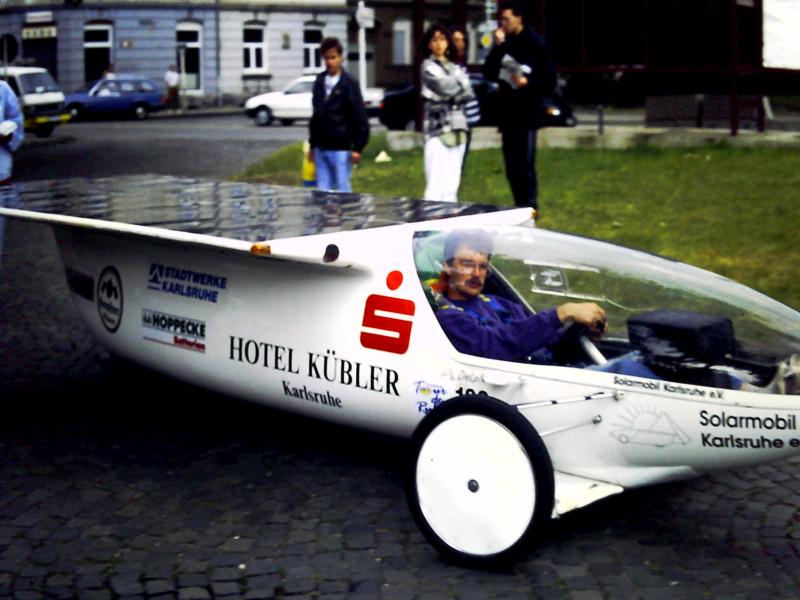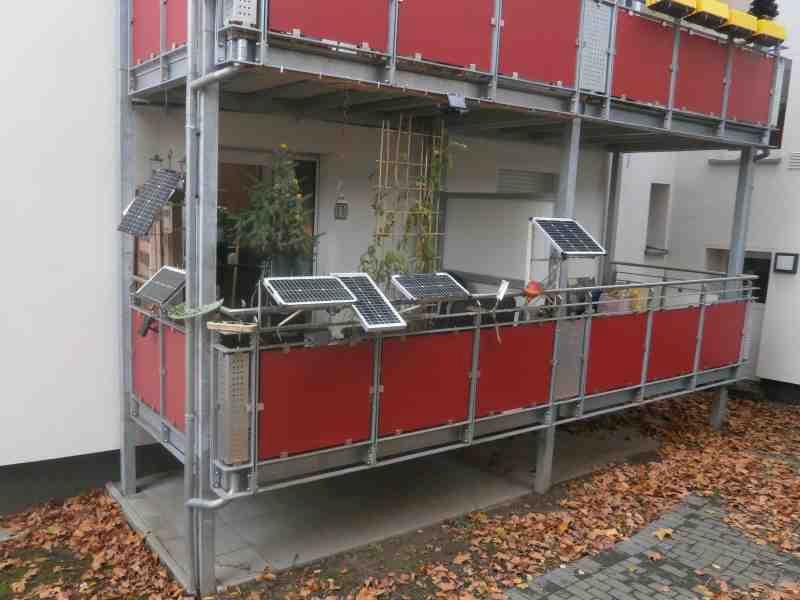 Solar Car at a competition in Essen, Zeche Zollverein
Solar Car at a competition in Essen, Zeche Zollverein
In the end, the origin of almost every primary energy carrier is the sun. Even fossil energy carrier, like coal or oil is storaged solar energy. At solar energy a distinction is drawn between two types of solar energy winning: on one hand Photovoltaics and on the other hand Solar Heat. Here especially, I want to deal with the second one:
<Solar Furnaces
are often large-scale complexes, whose produce heat. A solar furnace consist of a system of
mirrors, partially mobile ones (Heliostaten), in whose focus there are temperatures of above
3000 degrees Celsius. Such a hight temperature could be used for melting metal or burning of
ceramics. Also it can be used to produce hydrogen, which could be storaged.
The first solar furnace (1949) stands at the borderline between Spain and France in Mont-Louis.
In this area the sun shines about 250 days within a year.
Another solar furnace stands in France in Odeillo. Here 63 Heliostaten achieve a temperature
of about 1000 degrees Celsius. The advantage of melting of metal is, that there are no contamination
by the fuel. The high temperatures could also be used in so called solar reactors to go on
chemical reactions. For example the production of hydrogen.
 My DIY-Solar-Power Plant at a balcony in Essen-Altenessen
My DIY-Solar-Power Plant at a balcony in Essen-Altenessen